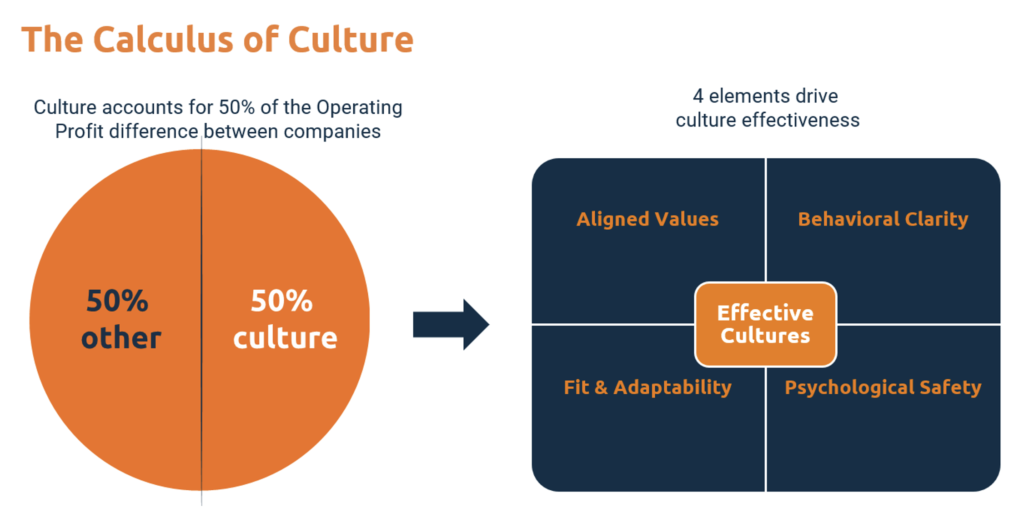The Calculus of Culture
The 4 Principles of Cultures That Outperform
A tale of two cities
We all know that culture is important. But does it drive the business? And if so, how? Are there types of cultures that are more effective than others?
Microsoft provides a great natural experiment that sheds light on these questions. Under Steve Ballmer, Microsoft was a fear-based culture that valued aggression, confrontation, and micromanagement. This led to a behavior pattern of protecting what they had instead of innovating. Shares declined -30% during his tenure. Under Nadella, the culture shifted to value learning, empathy, and collaboration. They embraced the idea of a “growth mindset.” They began innovating and entering new markets. Shares are up 900% in his tenure.
The results are in. Culture – the way people work together to implement the company’s ambitions – is what drives results.
The data are in
Two different studies demonstrate the link of culture to results. In one, James Heskett of Harvard estimated that culture is responsible for 50% of the difference in operating profit between companies. In a second study, companies listed among the best places to work based on their corporate cultures delivered 20% higher returns to shareholders than comparable companies over 5 years. Culture is likely your biggest single performance lever.
It’s about effectiveness, not strength
We often think that successful cultures need to be strong – big, intensely felt, uncompromising – to deliver these results. The data show this is not the case. Microsoft under Ballmer was a strong, but unsuccessful, culture. What matters is that a culture is effective. Effective cultures share 4 underlying characteristics that in turn drive success. These are what to focus on:
- Aligned values. Research from Jenny Chapman of UC Berkeley shows that companies outperform when they have a set of values that are aligned in two directions. First, the Leadership Team is fully aligned to the values. Second, employees understand and strongly embrace the values. When there is intensely felt consensus about the company’s values, superior performance follows.
- Behavioral clarity. Values are the fundamental building block, but they need to be brought to an actionable level. Companies that outperform break values into a clear, understandable set of behaviors that employees can put into day-to-day practice.
- Fit & adaptability. An organization’s values and behaviors must fit the environment and competitive context they operate in. But equally important, companies have to be highly adaptable. They must have an external orientation, and be quick to adjust their strategies, values, and behaviors to align to changes in their environment. Companies whose culture fits the dynamics of their environment yet are adaptable in the face of change outperform their peers.
- Psychological Safety. Research pioneered by Amy Edmonson of Harvard and demonstrated by Google in their now famous “Project Aristotle” study show that the most common denominator of high performing teams and organizations is the presence of psychological safety. This is a sense of confidence that one will not be embarrassed, rejected, or punished for speaking up. Psychological Safety drives dialog, debate, collaboration, and ultimately innovation.

Don’t worry about the ping pong table
Too often companies confuse perks with culture. Performance is not driven by having ping pong tables and free beer. The data show that the characteristics above lead companies to act with clarity, agility, speed, and decisiveness, and this is what delivers superior performance. Make your culture your own but stay true to these principles of effective cultures.
Comments are closed